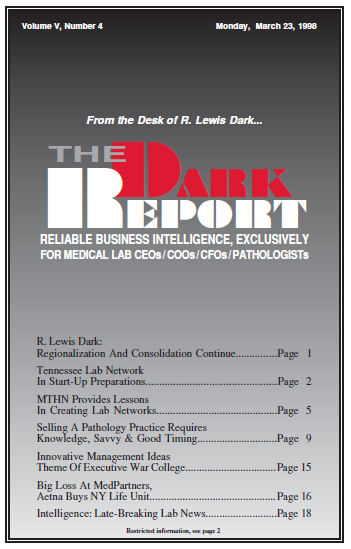CEO SUMMARY: Consolidation of the healthcare industry may be continuing, but the process is not profitable for some of the country’s largest corporations. Clinical laboratories will continue to be impacted by the financial fortunes of these major players. Here’s why the troubles at MedPartners and Aetna/U.S. Healthcare presage more financial pressure. TWO MAJOR COMPANIES in …
Big Loss At MedPartners, Aetna Buys NY Life Unit Read More »
To access this post, you must purchase The Dark Report.


